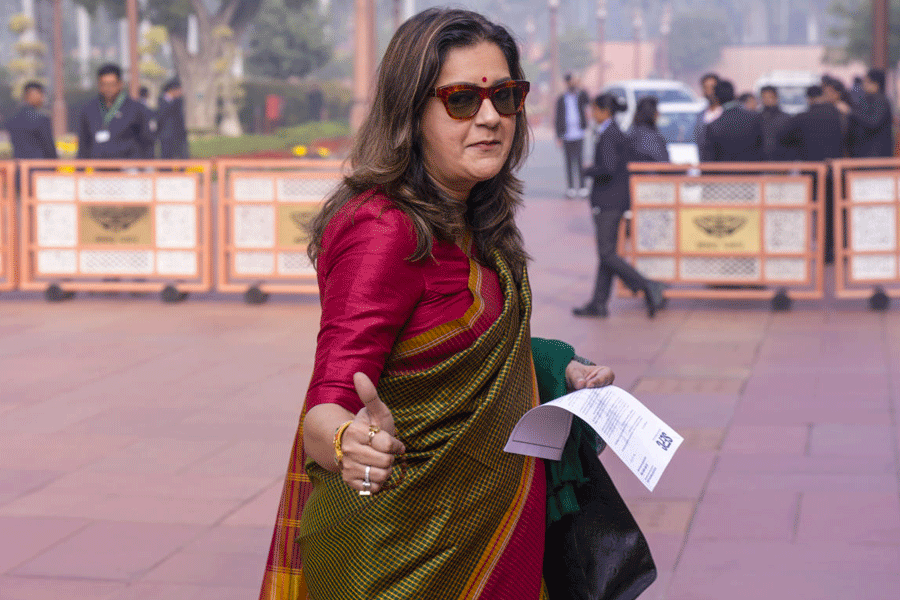|
|
EMPIRES OF THE INDUS: THE STORY OF A RIVER By Alice Albinia,
John Murray, Rs 550
They talk in Leh of how Lal Krishna Advani’s eyes popped out in astonishment when he learnt that the stream bubbling past his bedroom in the Indo-Tibetan Border Police guest house was the Indus that gave India its name. He had always thought of it as watering his native Sindh and confined to mlecchha Pakistan. But though he organized the annual Sindhu Darshan festival while the Rashtriya Swayamsevak Sangh got into the act with Sindhu puja, surely Alice Albinia exaggerates in claiming it became “a mission of the extremist Hindu groups with which Advani is affiliated to reclaim ‘western India’ from Pakistan”?
This is probably one of the few, very few, flaws in a beautifully written and highly evocative travelogue that in traversing the river’s more than 3,000-km course, takes the reader on an informed tour of nearly 45 million years of history. It can easily be forgiven a writer who recognizes Tibet is “stolen property” and spots the supreme irony of the “tyranny” of Pakistan’s army lording it over a region that boasted of the world’s oldest “democracy of civic bodies” and socialist system in a area that was larger than the ancient civilizations of Egypt and Mesopotamia.
Unlike Ian Stephens’ Pakistan: Old Country, New Nation, this is not an attempt to furnish a parvenu state with a phoney provenance. It is more like Dennison Berwick’s A Walk along the Ganges, which, too, explored contemporary riverine life in the context of the past as the author trudged from Sagar Island to Gau Mukh. Why did Berwick do it? Why did Albinia? We cannot go beyond George Leigh Mallory’s famous “Because it’s there” when asked why he wanted to climb Mt Everest. But we are glad they did, and must rejoice that unlike the hapless Mallory, Albinia and Berwick survived to tell the tale.
And what a tale! Albinia’s empires of the Indus are empires of the mind, of man’s indomitable will since time began to triumph over nature and create his own world. In exploring Sindh’s Zindapur festival, she makes the first of many throwaway remarks of extraordinary political perspicacity. Hindus and Muslims worshipped together at the island shrine until a minor rift prompted the court to award priority to Muslims in the 1880s, whereupon the Hindus moved away and the festival flagged. “It was with incidents such as these that the Pakistan movement was nurtured, and with hindsight, the dispute does seem to be a precursor of Partition.” She calls it “a classic case of divide-and-rule.” It is significant, too, that the quarrel was instigated by a Hindu swami’s “reactionary piety”.
Let it not be thought that Empires is a commentary on current affairs. Albinia’s concern is with the rise and fall with the water level — the aquatic connection is never far from her thoughts or mellifluous prose — of civilizations before and since the Aryans came to India. She describes Harappa and Mohenjodaro and speaks of male stratagems to destroy “Strirajya” where, so the Mahabharat says, women “roved about at their pleasure, independent”. Modern attempts to turn the Indus Valley ox into a horse are gently mocked. She laments that instead of cowries, the only shells now exchanged in Baltistan are explosives.
None of this is academic theorizing. Western classical, modern European, ancient Hindu and Islamic scholarship helps to explain observations on the ground. With a background at the School of Oriental and African Studies in London and work experience as a journalist in Delhi, Albinia is well equipped to interpret what she sees and hears in a context that blends history, archaeology, botany, sociology and every other science you care to mention. It’s rich fare, too rich perhaps. A more detailed map of her travels might have eased digestion. Burzahom, for instance, with its Neolithic giants from where a stone carving disappeared into the maws of the Archaeological Survey of India, can’t be found on the map.
It is difficult to believe that this intrepid explorer striding through Pakistan, Afghanistan, India and Tibet, weeps and vomits and that her knees shudder with fear as she clambers along a perilous mountain ledge. Such admissions have an endearing human ring. Her stomping ground is resonant with the sonorous chant of the Rig Veda. It is where Alexander the Great greedily grasped at immortality. Albinia recounts with verve and erudition how his arrival at the Indus after an epic campaign coincided with Buddhism’s advent. No wonder the statues of Buddha in Swat and Gandhara have a Grecian poise: “Greek and Indian art-forms, languages and social structures commingled like rivers for a brief and mutually sympathetic moment.”
Taxila flourished as an ecumenical university under Indo-Greek rulers like Menander. Valleys that now swarm with Muslim fundamentalists were for centuries a byword for religious tolerance. Albinia also deconstructs Alexander’s mythologizing. Far from his audacious journey culminating in an Indian triumph, it made so little military impact that no local historian bothered to record it; the territory was swiftly reconquered. Alexander has retreated into memory but Asoka, some of whose 84,000 stupas she saw and touched, is a living force. There is a sad epilogue: last year, fundamentalists dynamited perhaps Swat’s last monumental stone Buddha. It recalled an era “when the kings were Buddhist, when caravans of silk passed through... and when Chinese monks braved the dragons and sorcerers of the Indus”.
Albinia has some hard things to say about Pakistan’s rulers. But to suggest that her book is anti-Pakistan or pro-India is to diminish a labour of love. She explores “the Pakistan of the Indian media: a grimly religious, violently black-hearted nation, apparently the opposite of everything that pluralist India stood for” and discovers their shared heritage. Recovering that past lies outside the scope of a book that ends ominously on the despairing note that man’s folly is driving into extinction the great river that shaped and enriched the subcontinent’s common legacy.












